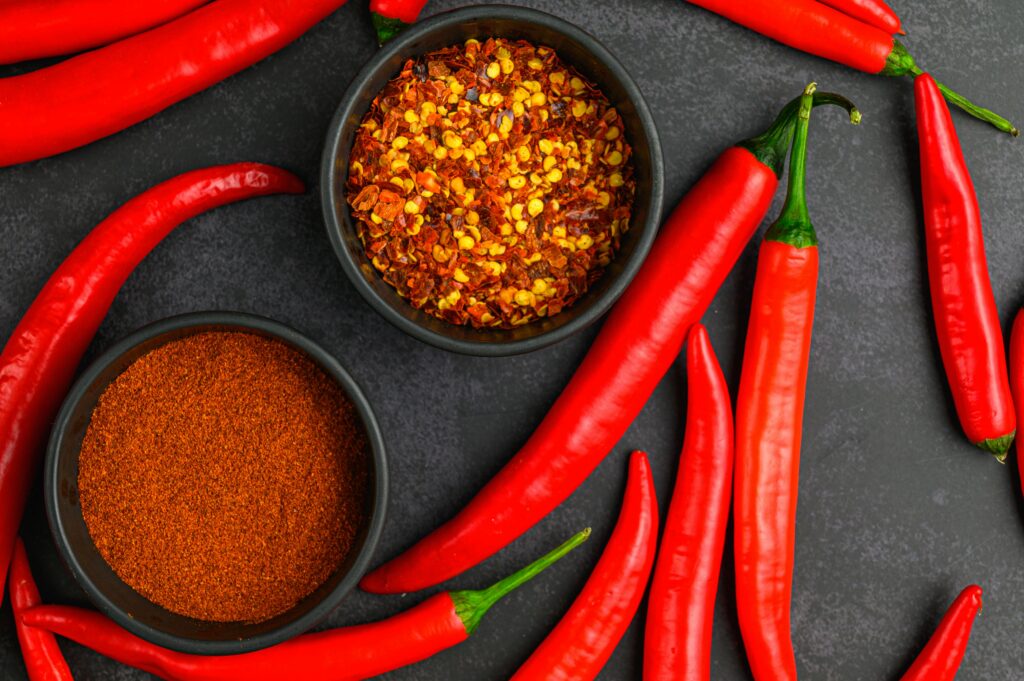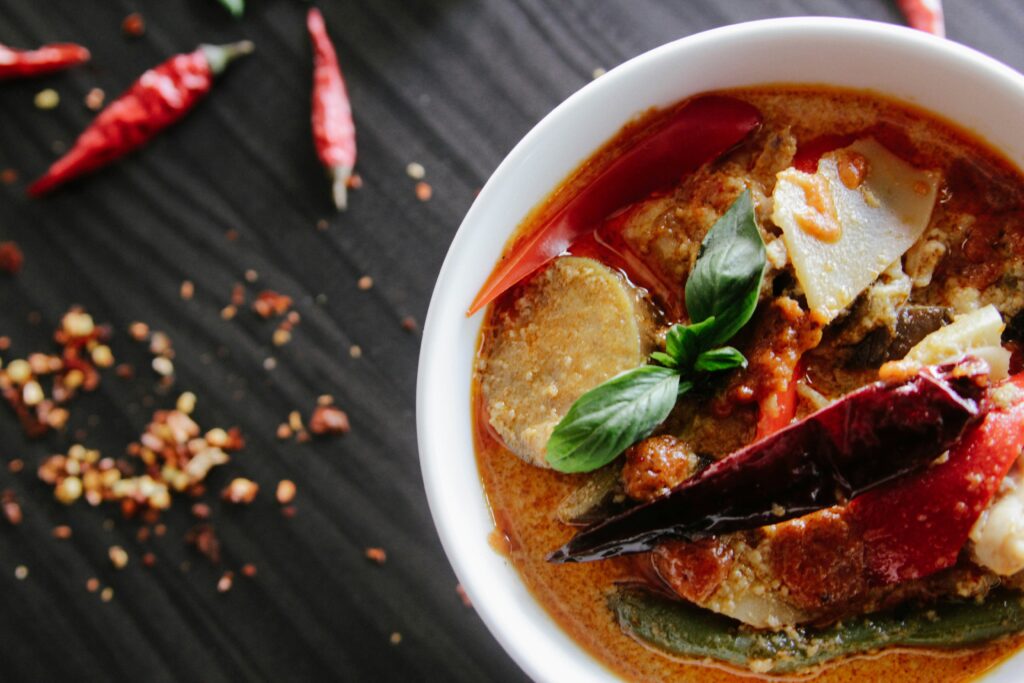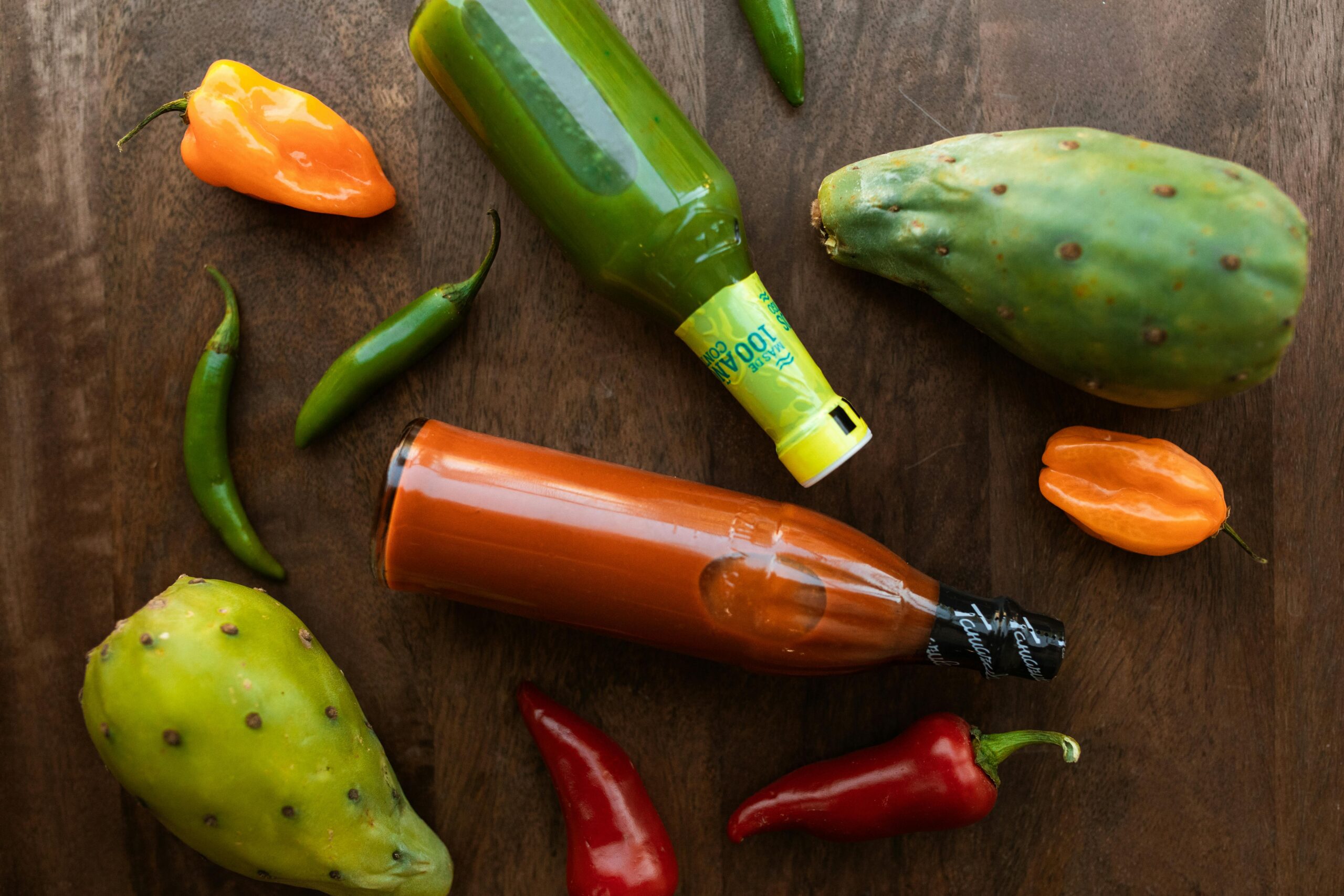by MARSHALL BONE
People and cultures all around the world are connected by the internet, social media, and knowledge. But there’s another, lesser-recognized connection we have: hot sauce. Think about it for a second. Though cuisine and regions differ, amazingly enough, our global love of spicing up dishes with hot sauce remains. Can’t make it on your own personal international tasting tour? Jump into this guide and go around the world, one hot sauce at a time.
Bhut Jolokia Sauce (Northern India)
You may already be familiar with bhut jolokia, better known as the ghost pepper. Originally from Northeast India, the desire for spiciness worldwide is so great that interest in the pepper has spread well beyond the region’s borders and into hot sauce bottles around the globe. Considering that the pepper is one of the hottest on the Scoville scale, jolokia pepper sauce is not for the faint of heart. But it will give you a big dose of flavorful heat if you can handle it. More than spicy to be spicy, this hot sauce is often packed with other ingredients like garlic, tomatoes, and salt for a burn that’s as delicious as it is hot.
Scotch Bonnet Pepper Sauce (Jamaica)
Transport your taste buds right to the Caribbean with scotch bonnet pepper sauce. A staple in Jamaican cooking (and pepper sauce, obviously), scotch bonnet peppers are similar in heat level to habañeros at around 350,000 Scoville heat units. The difference is that scotch bonnets have a lightly sweet and tropical fruit flavor, depending on where they’re grown.
Though scotch bonnet pepper-based sauces can vary around the Caribbean, they’re often enhanced with vinegar, garlic, and tropical fruit like mango and pineapple for a slight sweetness with the major heat.
Cajun-Style Hot Sauce (United States)
 Cajun-style or Louisiana-style hot sauce keeps it fairly simple with its ingredients, using a combination of vinegar, salt, and chiles, such as cayenne or tabasco peppers. What sets Louisiana-style hot sauce apart is its vinegar-forward taste, making it the perfect sauce to cut the fat of fried foods. If you’re feeling inspired by its Southern origins when you’re cooking at home, this hot sauce is your must-have in a traditional regional dish like Louisiana’s official state cuisine – gumbo!
Cajun-style or Louisiana-style hot sauce keeps it fairly simple with its ingredients, using a combination of vinegar, salt, and chiles, such as cayenne or tabasco peppers. What sets Louisiana-style hot sauce apart is its vinegar-forward taste, making it the perfect sauce to cut the fat of fried foods. If you’re feeling inspired by its Southern origins when you’re cooking at home, this hot sauce is your must-have in a traditional regional dish like Louisiana’s official state cuisine – gumbo!
Sriracha (Thailand)
Sriracha may have originated in Thailand, but it has heat lovers in the United States, Vietnam, the Philippines, and all over the world begging for more. That’s likely because of its well-balanced flavors – spicy, sweet, salty, sour – that offer an unmatched versatility for any number of dishes. This mild-to-moderate hot sauce is usually made with red Thai peppers or red jalapeños, garlic, sugar, vinegar, and salt.
Looking for the true, authentic sriracha experience? The Thai version of sriracha is actually thinner and much tangier than American-made sriracha.
Peri Peri (Portugal & Mozambique)
Portuguese and African flavors collide to create peri peri, also known as piri piri. The Afro-Portuguese sauce is popular in many countries, including Portugal, South Africa, Mozambique, Canada, and Angola. With its wonderfully spicy and tangy notes, it’s not hard to understand why. Piri piri (Swahili for “pepper pepper”) takes African bird’s eye chilies, then adds lemon and aromatic ingredients like garlic, onion, oregano, tarragon, and paprika for a versatile sauce for marinades and other recipes.
Ti-Malice (Haiti)
Sauce Ti-Malice is known for its heat and distinct citrusy-sour notes – and the folklore behind its name. Ti-Malice, a trickster, was tired of Bouki always showing up at his home right at lunch and dinner time. To deter him, Ti-Malice secretly added a spicy pepper sauce to the food. But the sauce had the opposite effect, because Bouki loved it and rushed to tell everyone in town about it.
You may feel the same about this Haitian Creole hot sauce. It’s made using scotch bonnet peppers or habañeros, along with sour oranges, lime, garlic, onions or shallots, and tomato paste. The result is a well-balanced flavor explosion that can be used as a dip or addition to stews, meats (it’s traditionally served with fried goat or pork), and sandwiches.
Turn Up the Heat with International Hot Sauces









